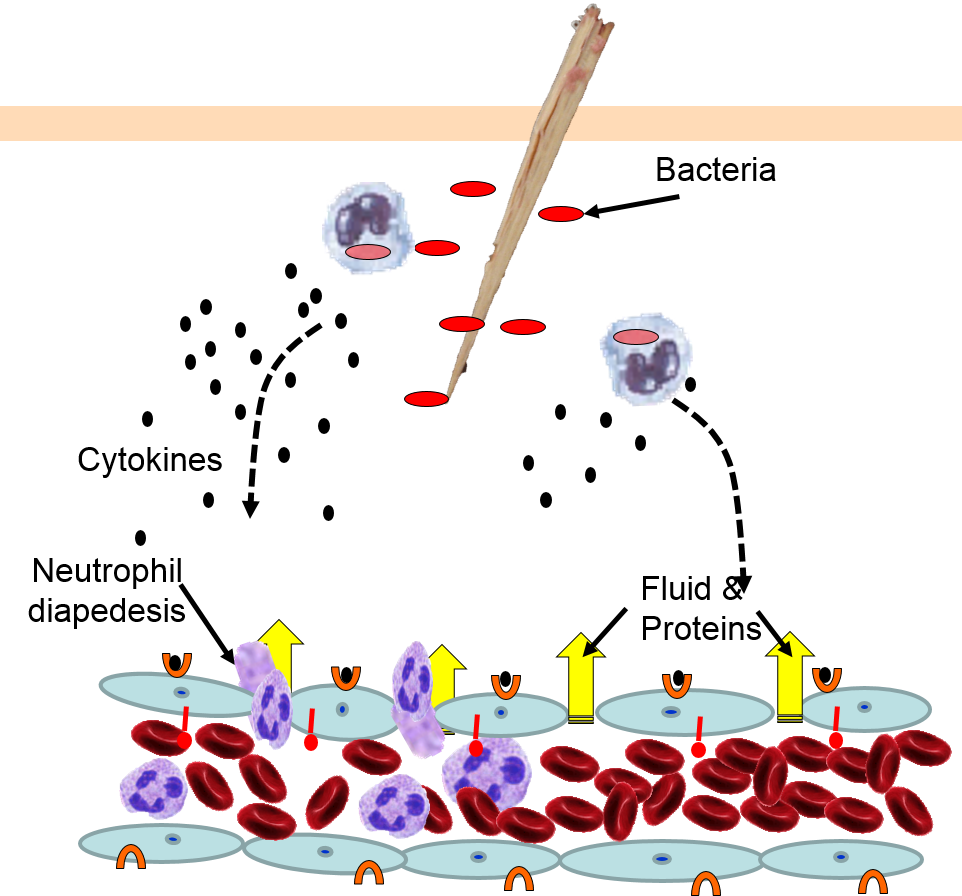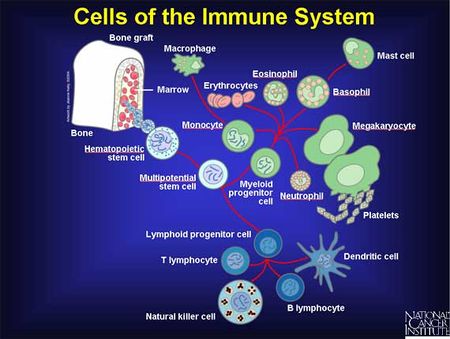Describe How Cells and Proteins Fight Infections
During this process some of the newly synthesized proteins will be degraded into peptide fragments and if they have sufficient binding affinity bind to MHC class I molecules. Your immune system is a large network of organs white blood cells proteins antibodies and chemicals.
They form the basis of living cells muscle and tissues.

. They are made in your bone marrow and are part of the lymphatic system. If the cell is infected with a virus these pieces of peptide will include fragments of proteins made by the virus. Several proteins enzymes help the cells of the innate immune system.
The protein -- a cell receptor called NOD2 found in several types of immune cells -- has long been known for its role in fighting off bacterial invaders by. Medicines frequently work by latching onto proteins. Innate immunity is a type of nonspecific protection against pathogens.
This system works together to protect you from foreign invaders bacteria viruses parasites and fungi that cause infection illness and disease. Made by white blood cells and do a number of things including. This is known as an autoimmune response.
They are cells involved in the inflammatory response. But those proteins dont usually trigger the immune system to fight the cells. As a result the synthetic capability of the host cell is directed principally to the production of new virus particles.
Proteins are an essential part of all living organisms. The immune system is a vast and complex interconnected network of many different organs cells and proteins that work together to protect the body from illness. A healthy immune system can defeat invading disease-causing germs or pathogens such as bacteria viruses parasitesas well as cancer cellswhile protecting healthy tissue.
These proteins respond to the presence of viral or bacterial molecules in the system and that. Microtubules actin filaments and intermediate filaments and their accessory proteins. The protein a cell receptor called NOD2 found in several types of immune cells has long been known for its role in fighting off bacterial invaders by sensing their presence and alerting immune cells to release chemicals that weaken or destroy the harmful bacteria.
There are 3 proteins used by the Immune system 1 Complement Proteins. It is composed of three main families of proteinaceous filaments. Among the better-known stand-alone proteins are the hemoglobin in blood and the antibodies also in blood that attempt to fight infections.
NF-κB are proteins that help to regulate gene expression and the production of certain immune cells. Sometimes the immune system mistakenly thinks that the bodys own cells are foreign cells. The main parts of the immune system are.
Cytotoxic T cells. White blood cells are the key players in your immune system. Monocytes control inflammation by releasing cytokines.
It reads a tell-tale fingerprint of proteins on the surface of cells so it can tell the difference between your own cells and what shouldnt be there. A total of nine different enzymes activate one another in a process similar to a chain reaction. In antibody responses B cells are activated to secrete antibodies which are proteins called immunoglobulins.
There are two types of immunity at work within the bodyinnate and acquired. Many viruses encode proteins that modify the host transcription or translation apparatus to favor the synthesis of viral proteins over those of the host cell. Lymphocytes recognize and destroy cells infected by viruses or transplanted foreign cells.
The cytoskeleton is an essential component of the cell and it is involved in multiple physiological functions including intracellular organization and transport. It responds quickly to a pathogen but It doesnt have the ability to remember individual threats. There it modifies viral RNA to.
Complement protects against infection in three ways. One enzyme in the first stage alerts several enzymes of the second stage each of which again activates several enzymes of the third stage and so on. The immune system triggers a response that produces cells and proteins to fight off infections.
B cells are involved in the humoral immune response which targets pathogens loose in blood and lymph and B cells carry out this response by secreting antibodiesT cells are involved in the cell-mediated immune response which targets infected cells in the body. A special cell of the immune system called a T cell circulates looking for infections. Crucially it can distinguish our tissue from foreign tissue self from non-self.
Up to 24 cash back T-lymphocytes and B-lymphocytes T and B cells T cells destroy body cells with the infected pathogen while B cells produce proteins that inactivate pathogens who have yet to find a host cell. They also do the work inside of cells. Understanding how the immune system.
Once a virus infects a cell the virus will use the protein-synthesis machinery of the host cell to synthesize its own proteins. One type of T cell is called a cytotoxic T cell because it kills cells that are infected with viruses with toxic mediators. The bodys own cells have proteins on their surface too.
Neutrophils specialize in killing bacteria. These antibodies serve as flags or flares over a battle site. This response develops when tissue is damaged or invaded by microbes.
There are two broad classes of such responsesantibody responses and cell-mediated immune responses and they are carried out by different classes of lymphocytes called B cells and T cells respectively. T cells include the Helper T cells and the Cytotoxic or Killer T cells. It then attacks healthy harmless cells in the body.
Firstly it activates a large number of complement proteins that bind to pathogens so. During the immune response against viral infection the protein ADAR1 moves from the cell nucleus into the surrounding cytoplasm. In response to such an infection B-cells can differentiate into plasma cellsthe bodys antibody-producing factories.
Plasma cells produce large proteins called immunoglobulins or antibodies that attach to the surface of foreign agents. The immune system is spread throughout the body and involves many types of cells organs proteins and tissues.



No comments for "Describe How Cells and Proteins Fight Infections"
Post a Comment